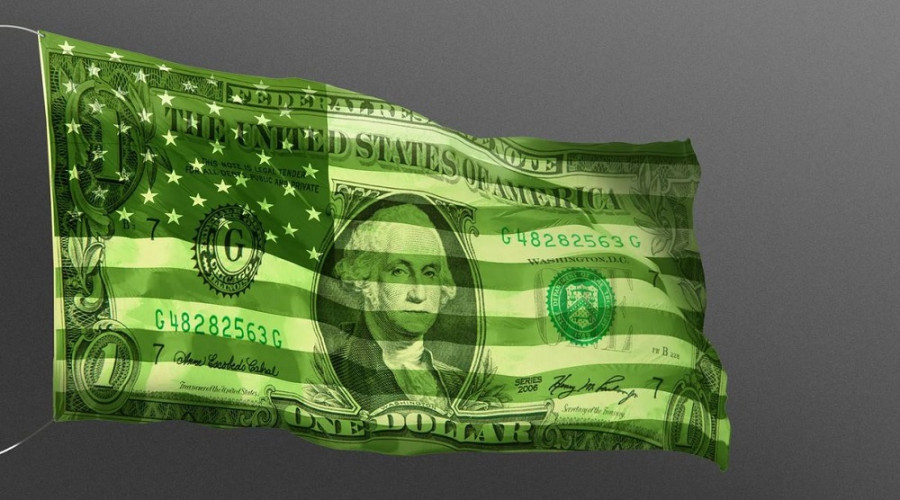See also


 11.04.2025 12:47 AM
11.04.2025 12:47 AMThe CPI report released on Thursday showed weaker-than-expected inflation. The market responded accordingly: the U.S. dollar came under renewed pressure (the U.S. Dollar Index fell into the 100.00 range), and EUR/USD buyers tested the 1.12 handle once again. This outcome is quite logical, as dollar bulls are facing a "rough patch" amid rising recession risks in the U.S.
Returning to the inflation report: according to the data, the overall Consumer Price Index (CPI) fell into negative territory month-over-month for the first time since June last year, hitting -0.1%. Year-over-year, the figure declined to 2.4%, while most analysts had expected a drop to 2.5%. The index has declined for two consecutive months, with March marking the slowest growth since September 2024.
The core CPI, which excludes food and energy, dropped to 0.1% m/m in March (versus a 0.3% growth forecast)—the weakest pace since June of last year. On an annual basis, the core CPI landed at 2.8% (vs. 3.0% forecast), also declining for the second month and reaching its lowest level since April 2021.
The report showed that energy prices dropped the most in March — down 3.3% YoY (compared to just -0.2% in February). Gasoline fell nearly 10% (vs. -3.1% in February). Price growth for transportation services slowed to 3.1% (from 6% the previous month), while food prices accelerated from 2.6% to 3.0%. Used car prices increased by 0.6%, while new car prices remained unchanged.
What does this result tell us? It's a tricky question, especially in light of the current situation. If not for recent global developments, Thursday's release would have brought the timing of the Fed's first rate cut this year closer — perhaps in June or May.
However, the March report reflects a "before" picture, while the consequences of the new tariff policies will begin to show from April–May onward (assuming the trade war doesn't end in a global truce). So, the relevance of Thursday's data is very limited, if not moot. According to the CME FedWatch tool, traders currently estimate a 68% probability of a rate cut at the Fed's June meeting. There's also about a 60% chance of another 25-point cut in July.
Still, if inflation jumps sharply in April and May, the market will revise these forecasts—especially considering that Fed Chair Jerome Powell said last Friday that the Fed won't adjust rates "until there is a clearer picture of the full impact of the new tariff policy." Since then, the situation has only become more complicated, so the Fed will likely adopt a wait-and-see approach in May, June, and July.
On the one hand, this stance should have supported the dollar. But — again — not under current conditions. Despite Trump's decision to delay imposing "major tariffs," market sentiment remains gloomy. For instance, JPMorgan analysts have not lowered their recession risk estimate (still at 60%) or retracted their pessimistic outlook for the U.S. economy. For two main reasons:
In other words, the trade confrontation continues to escalate, and the risk of a U.S. recession remains high (and is growing daily as these aggressive measures remain in effect). Thursday's inflation report cannot extinguish this fire—Trump's recent actions undermine its relevance. It's essentially a "message from the past" and nothing more. Thursday's realities paint a much darker outlook.
As a result, the U.S. dollar remains under pressure, making it still reasonable to use long positions on EUR/USD during pullbacks. The next bullish targets are 1.1200 and 1.1250 (the upper line of the Bollinger Bands indicator on the monthly chart).
You have already liked this post today
*The market analysis posted here is meant to increase your awareness, but not to give instructions to make a trade.
No macroeconomic events are scheduled for Tuesday—neither in the U.S., the Eurozone, Germany, nor the U.K. Thus, even if the market were paying any attention to macroeconomic data, it simply
The GBP/USD currency pair also traded higher on Monday despite no clear reasons or fundamental grounds for this movement. However, the pound has risen even on days when the euro
The total speculative bearish position on the US dollar more than doubled over the reporting week, reaching -$10.1 billion. The Canadian dollar and the yen strengthened the most, while
While Europe and parts of Asia continue celebrating Easter and political life has temporarily paused, in the U.S., the "Make America Great Again" trend set by Donald Trump continues
E-mail/SMS
notifications

Your IP address shows that you are currently located in the USA. If you are a resident of the United States, you are prohibited from using the services of InstaFintech Group including online trading, online transfers, deposit/withdrawal of funds, etc.
If you think you are seeing this message by mistake and your location is not the US, kindly proceed to the website. Otherwise, you must leave the website in order to comply with government restrictions.
Why does your IP address show your location as the USA?
Please confirm whether you are a US resident or not by clicking the relevant button below. If you choose the wrong option, being a US resident, you will not be able to open an account with InstaTrade anyway.
We are sorry for any inconvenience caused by this message.

